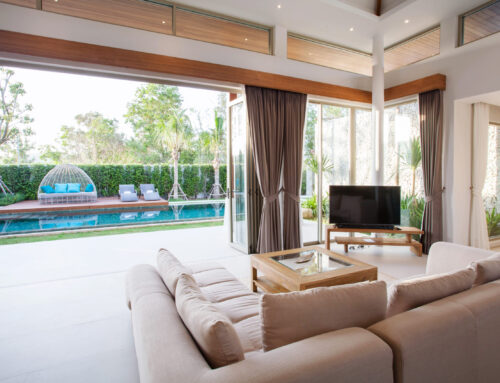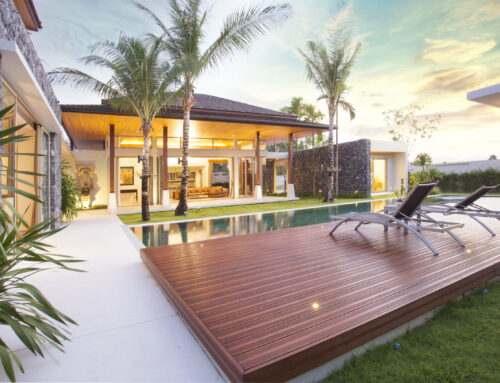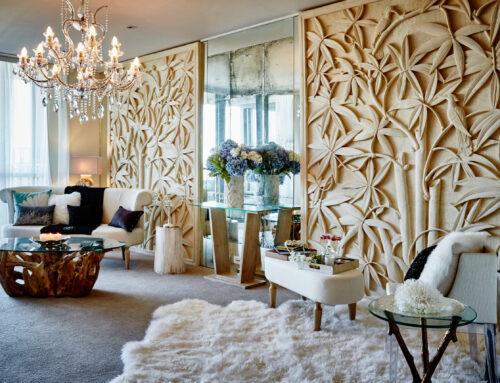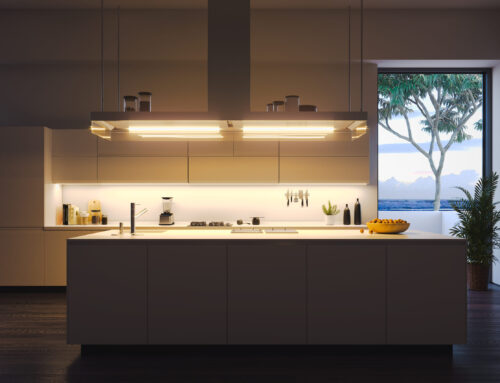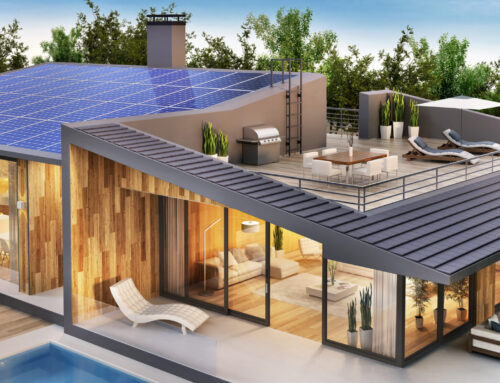Interior designers are constantly being asked for sustainable design tips for homeowners who want to start a luxury remodel without putting undue stress on the environment. While this used to be a fairly challenging issue, innovation in materials and processes means that you can easily give your home an elegant upgrade in a sustainable, custom way. If you are curious about how to approach an eco-friendly home refresh, read on for our favorite sustainable design tips.
Emphasize Natural Light
The best designs use light well, and this is no less true when trying to refresh your space in a sustainable way. Assess how light enters the room you are remodeling. The way your room’s natural light radiates around the area significantly impacts everything from energy efficiency to mood. Are your windows double-paned? Would the space benefit from having your contractor enlarge the windows or reshape them? Can your windows be highlighted to become works of art themselves? Using vintage accessories, like sunburst mirrors or mirrored Art Deco sideboards, can you bounce incoming light? The answers to all of these questions can play an essential role in your next steps and dictate how you will use the space in the future.
Choose Wall Colors Wisely
One of our best sustainable design tips is to consider not just your favorite colors or what is popular when preparing to repaint a room but how that color will impact the energy and atmosphere of the room. Darker, moody wall colors can enhance relaxation. Still, if you don’t have ample natural light, you’ll need to supplement it with artificial light, which will automatically alter the feeling of the space. Lighter hues reflect light – brightening the room without using as much energy.
Utilize Vegan Paint
Speaking of wall paint, the industry has come a long way in making low (or zero) VOC paint, vegan paint, and other sustainable options. You may not think about paint using animal byproducts, like casein, but many do. Better Homes & Gardens interviewed expert Daniel Brooks on the subject, and Brooks revealed: “‘Vegan paint replaces all animal products with a natural plant-based binder, such as vegetable casein or legumin, and certify that they are cruelty-free.’” Farrow & Ball and Auro Paints are among a growing number of companies that offer a range of paint finishes that are all cruelty-free and sustainably developed.
Purchase Kinder Furniture
One of Martha Stewart Living’s favorite sustainable design tips is for people to buy kinder furniture. There are a couple of ways of going about this process. The Magazine advises starting by looking for the “Sustainable Furnishings Council (SFC) seal.” They are also fans of choosing high-quality vintage items or antiques, like Chesterfield sofas or auction house finds instead of purchasing from big box stores.
Reupholstering a piece you already own that has excellent bones may seem like a pricey, more time-consuming option than buying new, but it’s a perfect way to reduce the amount of furniture headed for landfills. Plus, you already adore the piece. This approach simply allows you to make it sing again without all of the additional environmental costs.
Work with Artisans to Create Custom Designs
An approach that Southern Living adores is choosing a craftsperson who can build your desired furniture piece out of materials that have a history. Louisiana’s Alex Gernier caught the Magazine’s eye when he created the perfect headboard for his bedroom – no small feat given that it was going into an 1880s apartment located in New Orleans. His approach, according to Southern Living: “The very first piece he made was an antique headboard for his room, which came from an old growth Cypress tree. The significance of this beautiful piece is that he carved it from a five-panel door that was salvaged from a house that flooded during Hurricane Katrina.”
Smaller pieces can also help transform a space while being sustainably sourced. Designer and artist Rochelle Porter has put sustainable manufacturing at the heart of her business. Southern Living raves about “everything from pillows and wallpaper to activewear for adults and kids” using “her prints, all hand drawn and translated directly from her artwork, often take inspiration from her global travels and Guyanese roots.”
Reuse Vintage Pieces in New Ways
No rule says that the vintage dresser sitting in your attic only has to be used in your bedroom or dressing room. Beautiful lacquered, curved pieces from the 1920s are being repurposed for dining room storage to rave reviews. Bar carts are always in demand for socializing, but they can also become lovely pieces for home offices and walk-in closets. And, of course, antique dressers under the hands of a skilled craftsperson can be easily used “as [a] vanity in the powder room,” a much-loved sustainable design tip recommended by Rachel Halvorson to Southern Living.
Remodel with Sustainable, Eco-Friendly Products
Every room that you remodel will face a different set of challenges. Among the best sustainable design tips for kitchens is the simple step of installing “Energy Star appliances, which use 10%-50% less energy than standard models,” according to experts at Better Homes & Gardens.
Once you have your appliances sorted, consider the materials you might use in your flooring and countertops. Both surfaces require durable and easy to clean materials, which has often led to design choices that didn’t have the ecological advantages that are now readily available. For example, Better Homes & Gardens designers love using eco-friendly solid cork flooring to elevate the look of luxury kitchens. Why? The Magazine explains: It’s a durable, natural material that’s easy on the feet –and the environment … While other trees can take decades to regenerate, cork trees regenerate every nine years.” It also has the advantage of being exquisite – don’t be surprised if it sparks a fair share of remodel-envy.
Countertops have long presented a quandary in luxury redesigns. You may want something that looks elegant and eye-catching but blanch at how it is produced; “Many popular countertop materials are manufactured using non-renewable resources and sealed with potentially harmful chemicals,” according to Better Homes & Gardens. Today, the Magazine recommends taking this sustainable design tip: Use bamboo. The Magazine raves: “Bamboo is a rapidly growing, renewable resource that makes an excellent eco-friendly countertop material. Although it’s technically a grass, bamboo looks and functions similarly to wood.”
Of course, your options aren’t limited to only bamboo. Better Homes & Gardens also recommends using reclaimed wood in kitchens that might benefit from the look of distressed materials, stainless steel made from up to 100% recycled content, or recycled glass. In fact, recycled glass is a sustainable design tip that is taking off for countertops and finding much love for backsplashes. Why is recycled glass getting so much attention? Better Homes & Gardens explains: “These eco-friendly countertops look similar to natural stone and are equally durable… The material [such as Terrazzo] is available in a wide range of colors, can last for several decades, doesn’t need to be sealed, and is nonporous and heat resistant.” While it is most certainly more expensive than granite and often more difficult to source, once the project is completed, you will have a stunning, environmentally friendly countertop that you adore.
Visit Distinctive Collection by Better Homes and Gardens® Real Estate when you begin your journey to buy or sell your unique home.


